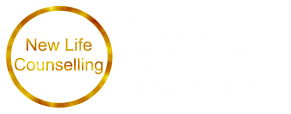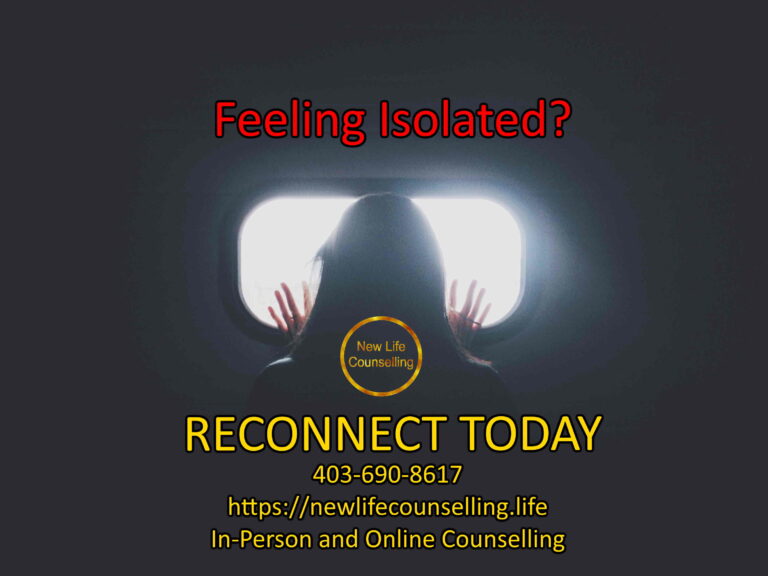Living in Calgary or Airdrie or throughout Canada has one thing in common. Namely you either have relationships or are in a relationship. When relationships go south, the concept know as Triangulation is a core relationship principle that can add incredible understanding to how we and others function in relationships. I found a great online article written by Lynne Forrest called “The Three Face of Victim – An Overview of the Victim Triangle.” Let’s begin to unpack this concept known as triangulation.
“Whether we know it, or not, most of us react to life as victims. Whenever we refuse to take responsibility for ourselves, we are unconsciously choosing to react as victim. This inevitably creates feelings of anger, fear, guilt or inadequacy and leaves us feeling betrayed, or taken advantage of by others.
Victim-hood can be defined by the three positions beautifully outlined in a diagram developed by a well respected psychiatrist, and teacher of Transactional Analysis, named Stephen Karpman. He calls it the “Drama Triangle,” I refer to it as the victim triangle. Having discovered this resource some thirty years ago, it has become one of the more important tools in my personal and professional life. The more I teach and apply the victim triangle to relationship the deeper my appreciation grows for this simple, powerfully accurate instrument.
I’ve sometimes referred to the victim triangle as a “shame generator” because through it we unconsciously re-enact painful life themes that create shame. This has the effect of reinforcing old, painful beliefs that keep us stuck in a limited version of reality.
I believe that every dysfunctional interaction, in relationship with other or self, takes place on the victim triangle. But until we become conscious of these dynamics, we cannot transform them. And unless we transform them, we cannot move forward on our journey towards re-claiming emotional, mental and spiritual well-being.
The three roles on the victim triangle are Persecutor, Rescuer and Victim. Karpman placed these three roles on an inverted triangle and described them as being the three aspects, or faces of victim. No matter where we may start out on the triangle, victim is where we end up, therefore no matter what role we’re in on the triangle, we’re in victimhood. If we’re on the triangle we’re living as victims, plain and simple!
Each person has a primary or most familiar role – what I call their “starting gate” position. This is the place from which we generally enter, or “get hooked” onto, the triangle. We first learn our starting gate position in our family of origin. Although we each have a role with which we most identify, once we’re on the triangle, we automatically rotate through all the positions, going completely around the triangle, sometimes in a matter of minutes, or even seconds, many times every day.
Starting gate Rescuers (SGR) see themselves as “helpers” and “caretakers.” They need someone to rescue (victim) in order to feel vital and important. It’s difficult for SGR’s to recognize themselves as ever being in a victim position – they’re the ones with the answers after all.
Starting Gate Persecutors (SGP), on the other hand, identify themselves primarily as victims. They are usually in complete denial about their blaming tactics. When it is pointed out to them, they argue that attack is warranted and necessary for self protection. These two – the Rescuer and the Persecutor – are the two opposite extremes of Victim. But again, regardless of where we start out on the triangle, all roles eventually end up in victim. It’s inevitable.
You may notice that both the Persecutor and Rescuer are on the upper end of the triangle. These roles assume a “one-up” position over others, meaning they relate as though they are better, stronger, smarter, or more-together than the victim. Sooner or later the victim, who is in the one-down position at the bottom of the triangle, develops a metaphorical “crick in the neck” from always looking up. Feeling “looked down upon” or “worth- less than” the others, the Victim builds resentment and sooner or later, retaliation follows. A natural progression from victim to persecutor follows. This generally moves the persecutor or rescuer into victim. Reminiscent of a not-so-musical game of musical chairs, all players sooner or later rotate positions.
Here’s an example: Dad comes home from work to find mom and Junior engaged in battle. “Clean up your room or else,” mom threatens. Dad immediately comes to the rescue. “Mom,” he might say, “give the boy a break. He’s been at school all day.”
Any one of several possibilities might follow. Perhaps Mom, feeling victimized by Dad, will turn her wrath on him. In that case, dad is moved from Rescuer to Victim. They then might do a few quick trips around the triangle with Junior on the sidelines.
Or maybe Junior joins Dad in a persecutory “Let’s gang up on mom” approach, or then again, maybe Junior will turn on Dad, rescuing Mom, with, “Mind your own business, Dad. I don’t need your help!” So it goes, with endless variation, but nonetheless, pinging from corner to corner on the triangle. For many families, it’s the only way they know to interact.
Our starting-gate position on the victim triangle is not only where we most often enter the triangle, it is also the role through which we actually define ourselves. It becomes a strong part of our identity. Each starting-gate position has its own particular way of seeing and reacting to the world. We all have unconscious core beliefs acquired in childhood, derived from our interpretation of early family encounters. These become “life themes” that predispose us towards the unconscious selection of a particular starting gate position on the triangle.
Sally’s mother was physically disabled and addicted to prescription drugs. From Sally’s earliest memory she reported feeling ultimately responsible for her mother. Instead of getting appropriate care from a parent who was concerned for her well being, she became the “little parent” of a mother who played the part of a helpless child. This childhood scenario set Sally up with a “life script” that predisposed her towards becoming a Starting Gate Rescuer (SGR). Care-taking others became her primary way of relating to others.
SGR’s, like Sally, have an unconscious core belief that might go something like this; “My needs are not important … I am only valued for what I can do for others.” Of course, believing these ideas requires her to have someone in her life who she can rescue (a victim). How else will someone like Sally get to feel valuable and worthwhile?
Sally would never admit to being a victim because in her mind she is the one who must have the answers. Nonetheless, she does, in fact, rotate through victim on the triangle on a regular basis. A SGR in the victim role becomes a martyr, complaining loudly, “After all I’ve done for you … this is the thanks I get!”
Starting Gate Persecutors (SGP’s), on the other hand, see themselves as victims in need of protection. This is how they can so easily justify their vengeful behavior … “They asked for it and they got what they deserved.” That’s the way they see it. Their core belief might go something like this; “The world is dangerous, people can’t be trusted so I need to get them before they hurt me.” This attitude sets them up to think that they must strike out in order to defend against inevitable attack.
Whereas a SGR may move into the role of persecutor by withdrawing their care-taking, (“That’s it – I’m not doing anything else for you!”) a SGP rescues in a way that is almost as painful as when they persecute.
Bob is a doctor who often justified hurting others. Attack was his primary way of dealing with inconvenience, frustration or pain. Once, for instance, he mentioned running into a patient of his on the golf course. Our dialogue went something like this;
“Lynne, can you believe that patient had the nerve to ask me to treat his bad knee, right then and there, on my only day off?”
“Yeah,” I replied, “some people just don’t have appropriate boundaries. How did you handle it?”
“Oh, I gave him a treatment, all right,” he chuckled, “I took him to my office and gave him a steroid shot he’ll never forget!
In other words Bob rescued his inconsiderate patient but in a way that “punished” him for daring to be so bold. To Bob, his action seemed rational, even justified. His patient had infringed on his free time, therefore, he believed, his patient deserved the rough treatment he got. This is a prime example of SGP thinking. Bob didn’t realize that he could have just said no to his patients request for treatment. He did not have to feel victimized by, nor did he need to rescue his patient. Setting boundaries never occurred to Bob as an option. In his mind he had been treated unjustly and therefore he had the right, even the obligation, to get even.
Victims also have core beliefs that set them up for their starting gate position on the triangle. Starting Gate Victim’s (SGV’s) believe they cannot take care of themselves. They see themselves as consistently unable to handle life. They even rescue from a one-down position, saying things to their potential rescuer like “You’re the only one who can help me.” These are words that any SGR longs to hear!
Starting gate positions are generally set-up in childhood. For instance, if a parent does not ask their children to take age-appropriate responsibility for themselves, they may grow up either to become adults who feel inadequate at taking care of themselves (starting gate victim) or become resentful adults who blame others when they don’t get taken care of in the way they think they should be. (a persecutor role). Either way, they are set up for a lifetime on the victim triangle.
There are many variations, and each case needs to be individually considered. We not only act out these triangular distortions in our everyday relations with others, but we also play out the victim triangle internally. We move around the triangle as rapidly inside our own minds as we do out in the world. We ensnare ourselves on the triangle with dishonest and dysfunctional internal dialogue. For example, we may come down hard on ourselves for not completing a project. Perhaps we lambast ourselves as being lazy, inadequate or defective (P), causing us to spiral into feelings of anger and self-worthlessness. Inwardly, we cower to this persecutory voice, fearing it may be right (V). Finally when we can’t bear it anymore, we take ourselves off the hook by justifying, minimizing or indulging in some form of escape. This is how we rescue ourselves. This could go on for minutes, hours or days.
Sometimes we rescue ourselves and others by denying what we know – sort of like; “If I look the other way and pretend not to notice, it will go away”. Denial or inner drama of any kind perpetuates a vicious cycle of shame and self loathing. Moving around the triangle keeps the self-disparaging messages running.The victim triangle becomes our very own shame-making machine. It’s up to us to learn how to turn this noisy mental machine off.
We can’t get off the triangle until we recognize we’re on it. Once we make it conscious, we observe our interactions with others as a way to identify our own starting gate position. We ask questions, like, “What hooks me? From where do I enter the triangle once I’ve been hooked?” We begin to train our Internal Observer to notice, without judgment, our conversations with loved ones, especially those more “sticky” moments (where we walk on eggshells).
It’s helpful to learn what the costs and trade-offs are for each of the three roles. Each role has its own language, beliefs and behavior – it’s beneficial to know them. This helps us to identify when we’re on the triangle. Studying the roles also promotes a quicker recognition of when we’re being baited to play. With all that in mind, let’s examine each role more carefully.”
The complete article can be found if you click here.
Do you have any questions about New Life Counselling? Check out our most Frequently Asked Questions
Jeremiah La Follette (MCC, RPC) is a registered professional counsellor who has a passion for providing positive results by restoring individual wholeness and healthy relationships.
For more information go to New Life Counselling or call 403-690-8617 for a free 15 minute consult to set up an online video counselling (telehealth) APPOINTMENT (CLICK HERE).


